|
 Secure Site
Secure Site
|
 |
Archive for July, 2012
 Mantra Meditation: Utamaro Kitagawa, The Courtesan Hanaogi of Ogiya Mantra Meditation
What is it?
Mantra meditation utilizes the power of sound and vibration to create stillness in the body, calm the nervous system and ultimately transform the mind. The words typically come from ancient spiritual languages, such as Sanskrit or Gurumukhi. The sacred meanings of the words enable you to establish a connection to profound truths that have been spoken for thousands of years, explains Krishna Kaur, a kundalini yoga teacher since 1970 and founding member of the International Association of Black Yoga Teachers (blackyogateachers.com).
What’s it good for?
Because each mantra differs in its meaning and vibrations produced, you can select mantras to create specific effects— such as increasing mental clarity, developing intuition, or reducing anger and stress. Kaur suggests starting with the simple mantra sat nam because it’s easy to say and remember, yet offers profound effects. Sat translates as “truth,” and nam as “identity.” This mantra helps you identify with a universal spiritual truth in which such transient emotional states as fear, anger and doubt fall away.
How long does it take?
Start with three to five minutes, increasing by a minute at a time until you can sit and chant for a full 11 minutes.
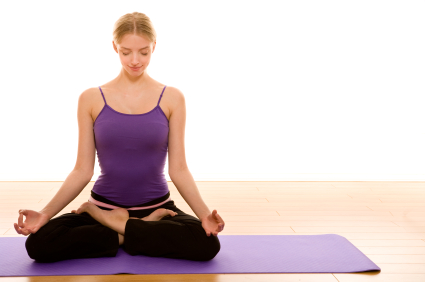 Meditation How do I do it?
1. Sit comfortably in a chair or on the floor with your spine straight to help your breath and the sound it creates flow smoothly. Close your eyes and bring your attention to your breath for a moment to get centered.
2. Take a long, deep inhalation through your nose. As you exhale, utter an extended sat (pronounced “sut”) to almost the end of your breath, followed by a short burst of nam (“nom”). Together, the mantra will sound like “saaaaaaaaaaat nam.”
3. Inhale slowly and evenly, then repeat the mantra as you exhale. Continue this pattern.
4. At the end of your session, inhale and hold your breath for a few seconds, then exhale through your nose. Do this three times, then sit quietly for a moment and feel the energy flow through your body. Open your eyes, stand slowly and carry your sense of calm and clarity with you.
Although meditation can be done in almost any context, practitioners usually employ a quiet, tranquil space, a meditation cushion or bench, and some kind of timing device to time the meditation session. Ideally, the more these accoutrements can be integrated the better. Thus, it is conducive to a satisfying meditation practice to have a timer or clock that is tranquil and beautiful. Using a kitchen timer or beeper watch is less than ideal. And it was with these considerations in mind that we designed our digital Zen Alarm Clock and practice timer. This unique “Zen Clock” features a long-resonating acoustic chime that brings the meditation session to a gradual close, preserving the environment of stillness while also acting as an effective time signal. The Digital Zen Clock can be programmed to chime at the end of the meditation session or periodically throughout the session as a kind of sonic yantra. The beauty and functionality of the Zen Clock/Timer makes it a meditation tool that can actually help you “make time” for meditation in your life.
adapted from naturalhealthmag.com By Frances Lefkowitz
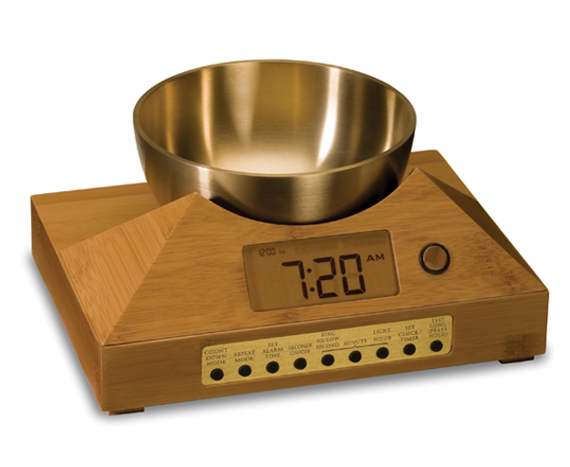 Bamboo Gong Meditation Timer and Alarm Clock Now & Zen, Inc.
1638 Pearl Street
Boulder, CO 80302
(800) 779-6383
Posted in Meditation Timers, Meditation Tools, mindfulness practice
 Sleep Getting enough shut-eye doesn’t just boost your energy — it may increase brainpower as well. Research shows that a good night’s sleep helps improve memory. In one recent study published in Nature Neuroscience, researchers found that sufficient sleep is also necessary to help retain episodic memory — your ability to remember times, places, and events. Although sleep needs vary, most of us require about eight hours a night.
Waking up in the morning should be as pleasant as falling asleep at night. The Zen Alarm Clock’s gradual, gentle awakening is transformative.
The Digital Zen Clock’s long-resonating Tibetan bell-like chime makes waking up a beautiful experience – its progressive chimes begin your day with grace.
adapted from Body + Soul Magazine, 2010
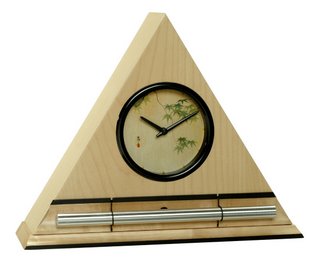 Japanese Maple Leaves Dial Face, the Zen Alarm Clock and Timer
Now & Zen – The Zen Alarm Clock Shop
1638 Pearl Street
Boulder, CO 80302
(800) 779-6383
Posted in Chime Alarm Clocks, sleep, Sleep Habits
 Instant Calm You’re cut off while driving. Your children erupt into a screaming fight. Or you’re five minutes away from an interview for the job of your dreams and your composure evaporates in a rush of anxiety. When life delivers adversity, stress is the common response. Your body kicks into action, preparing for a fight. The adrenal glands pump out adrenaline and noradrenaline — hormones that increase the heart rate, quicken breathing, raise blood pressure, and tense muscles. You’re ready to take on the perceived threat to your safety or well-being.
Of course, in reality we rarely run from foes or physically challenge them. As a result, we don’t burn off these powerful hormones, leaving them to “course through our bloodstream,” explains Dr. Herbert Benson, a pioneer in stress research at Harvard Medical School’s Mind/Body Medical Institute. In the short term, a pounding heart and sweaty palms can exacerbate the stressful emotions you’re already feeling. Left unchecked, this chemical mix sets you up for an array of physical and emotional problems, says Benson, including anxiety, depression, and intensified PMS and menopause symptoms.
The next time you are facing a stressful situation, stop yourself from spiraling out of control and bring yourself back to center.
Here is one exercise:
During a stressful event, your thoughts can intensify the storm inside of you. For example, say you’re about to give an important presentation to a large audience. You might find yourself worrying that you’ll get the facts wrong. This kind of worst-case-scenario thinking can increase the rush of stress hormones, worsening your prespeech jitters.
A technique known as “thought-stopping” can help you halt these negative, obsessive thoughts, says Dr. Kenneth Ruggiero, assistant professor in the department of psychiatry and behavioral sciences at the Medical University of South Carolina in Charleston. The first step, he says, is to literally call a halt to this train of thought. If you’re alone, say the word “Stop!” out loud. If you’re around others, think it to yourself. Some people even find it useful to pinch themselves to disrupt those stressful thoughts, says Ruggiero. “This gives you a moment of distraction,” he says, “and an opportunity to change your focus.”
Next, choose a positive thought on which you’ll focus instead, such as “I’ve given presentations before, and they went well” or “I know this material better than anyone in the audience.” In doing so, says Ruggiero, you swap a negative, stress-inducing thought for a positive one.
adapted from Body + Soul Magazine, 2010 by Erin O’Donnell
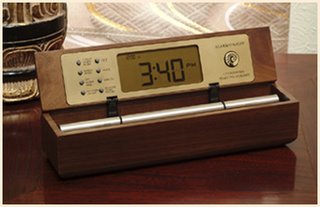 Walnut Wood Meditation Timers with Chime Now & Zen – The Zen Alarm Clock Store Headquarters
1638 Pearl Street
Boulder, CO 80302
(800) 779-6383
Posted in intention, mindfulness practice, Well-being
 Soothing Bedroom Tips Prepare your bedroom for a good night’s sleep by reducing incoming light, lowering the temperature and removing any clutter from around your bed.
Trouble sleeping? Feeling tired? Check these bedroom trouble spots.
Light
If you can see your hand after the lights are turned off, your bedroom is too light. Streetlights, nightlights and appliances can produce enough light to disrupt the production of melatonin, the hormone that helps regulate the sleep cycle, causing effects similar to jet lag.
■ Fix It: Move or cover light sources. If streetlights invade your bedroom, install lightblocking drapes. Also limit light exposure before bedtime. Being surrounded by electric light in the evening—even checking e-mail before bed—can reset your biological clock and make falling asleep difficult.
Temperature
Heating the bedroom in cold weather isn’t just a waste of energy; it also messes with your sleep.
■ Fix It: A temperature of 65 degrees is ideal for sleep. Keep warm with a comforter or blankets that retain body heat.
Noise
Sudden loud noises can awaken you, and even passing traffic can fragment sleep.
■ Fix It: Sleep as far as possible from the street and noisy appliances. Mask other sounds with earplugs, a “white noise” generator or a fan.
Visual Noise
Clutter, visual distractions, stimulating colors, bright lights and TV can all distract sleepers.
■ Fix It: Paint your walls soothing colors such as lavender, blue or light green, and remove everything nonessential from your nightstand.
Shui that Feng
If you’re not sleeping well, check the position of your bed, which may be a source of distress. Consider rearranging if your bed is:
■ Over the garage or entry.
■ Near a fuse box or other electrical source.
■ Aligned with doorways.
adapted from Natural Home Magazine, Nov/Dec 2010 by Carol Venolia
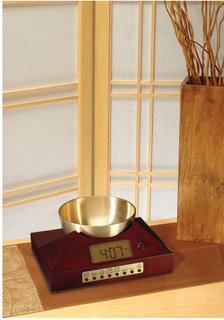 Zen Timepiece in Cherry Finish with Tibetan Bowl Alarm Clock Now & Zen’ Alarm Clock Store
1638 Pearl Street
Boulder, CO 80302
(800) 779-6383
Posted in Feng Shui
 meditation mindfulness It may start in your head, but it’s often your body that bears the brunt of chronic stress. A likely risk factor for heart disease and cancer — the two leading causes of death in the United States — chronic stress has also been linked to insomnia, migraines, lowered immunity, increased abdominal fat, and digestive problems.
Although it might not seem as dire a problem as smoking or a decades-long fast-food habit, chronic stress may be every bit as damaging. Scientists aren’t clear how it contributes to illness, but there are likely both behavioral and physiological factors at work. When you’re under stress, you’re less likely to eat well or exercise, but evidence also suggests that the release of stress hormones could promote low-level inflammation (an effect that may, in turn, contribute to a host of ailments and chronic illnesses).
Reducing stress, then, is an absolute must for good health. But rather than rely on the annual vacation to melt away tension, build in daily prevention. “Our bodies and minds are shrieking for us to take better care of ourselves,” says Alice Domar, Ph.D., founder of the Domar Center for Mind/Body Health in Waltham, Massachusetts.
One Solution: Meditation
Meditation
Everybody needs a sanctuary, a place to rest and renew. The beauty of meditation — a proven and profound form of self-care for mind and body — is that almost anytime, anywhere, you can access that place of restorative calm.
Yet for some, meditation sounds mysterious or intimidating, probably because of some common misconceptions: that it’s dry or boring or “too spiritual”; that it’s an esoteric practice for those operating on some higher, more rarefied plane.
Yes, meditation is an ancient spiritual practice — one that cuts across different religions and many different traditions. But what it boils down to — however it’s practiced and whatever form it takes — is this: To meditate simply means to rest in moments of appreciative, exquisite attentiveness. Moments that allow us to savor the experience of living and that make us feel both deeply calm and deeply alert, in tune both with our self and with the world around us. Moments we come away from feeling refreshed, renewed, and engaged. Meditation is a way of communing with spirit.
We all know how to meditate; it’s an instinctive ability. If you’ve ever been deliciously absorbed gazing at the flow of a river, the dance of a fire, or the twinkle of stars, you’ve enjoyed meditative moments. And you can create those moments almost anywhere at any time. If you have a favorite place in your home in which to meditate, that’s wonderful. But you can meditate just as effectively sitting at your desk or on a park bench, or lying in the grass. The fact is, the juicier and more sensual you let meditation be, the more you will get out of it.
Meditating on a daily basis is easy. Give yourself a space of time — 10 to 20 minutes morning and afternoon, or if that’s not possible, a few minutes here and there throughout the day. Choose a pleasing, peaceful focus for attention — sensations, such as the flow of your breath; a sound you make, such as ahhh; or a visual image, such as waves coming to shore. This is your home base. Lightly focus your attention, and when your mind wanders off, gently come back to home base. Minds wander — a lot. So go easy on yourself and accept the process. Set your Meditation Chime Timer (Now & Zen, $199.95) for 20 minutes. When you hear the gentle chime, slowly open your eyes.
Our Meditation Chime Clock’s long-resonating Tibetan bell-like chime makes waking up and meditating a beautiful experience – its progressive chimes begin your day with grace.
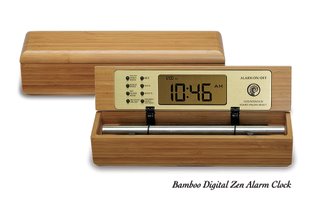 Meditation Chime Timer by Now & Zen, Inc. - Boulder, CO Those are the basics, but there is no one right way to meditate; explore what works for you. These two simple meditations will help you get started.
Meditation One: Sensuousness of Breath
Time: 5 to 10 minutes.
When and Where: Anytime, anywhere.
Position: Sitting comfortably or lying down, eyes open or closed.
Intention: I bask in healing pleasure. I receive the nourishment into every cell of my body.
One of the most universal meditation practices is to take pleasure in the flow and rhythm of breath. Buddha described this as “breathing in and out sensitive to rapture.”
1. Breathe out with a deep sigh a few times and notice what that feels like. Let yourself make quiet whooshing sounds. If you feel a stretch or a yawn coming on, give in to it. Gently ask yourself, “What pleasure do I feel in breathing?”
2. Explore the sensations that accompany breathing — the feeling of the chest expanding and contracting, the gentle touch of the air gliding through the nose and down the throat, filling and then emptying the lungs. How luscious can you let breathing be? Perhaps you enjoy the relaxing ebb and flow of the breath, or love breathing’s whispering sounds. If you’re outside, you might savor the fragrance of grass, trees, or flowers as you inhale. You might feel simple wonder at receiving this essential gift from life.
3. Breathe with this type of awareness for 10 minutes or so, allowing your attention to be soft and undemanding, like rose petals on your skin. Thoughts and feelings about your life will come into your awareness; this is healthy and healing, so don’t try to block them out. Just keep coming back, gently, to the sensuousness of breath when you can.
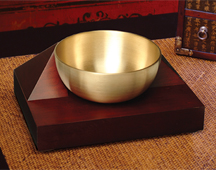 Singing Bowl Meditation Timer by Now & Zen, Inc. Meditation Two: Heart Warming
Time: 5 to 20 minutes.
When and Where: Anytime, although the end of the day is nice. Try to find a cozy place.
Position: Sitting comfortably or lying down, eyes open or closed.
Intention: I am awake to love. I am ready to give and receive.
In this meditation you give yourself time to feel the emotional impact of all that is in your heart. Be leisurely, and linger in any of the meditation’s phases for as long as you like.
1. Begin by thinking of someone or something you love without reservation. Notice the sensations that arise in your heart and let yourself be with whatever is there — warmth, aching, joy, longing.
2. Bring both hands to your heart, feeling the warm contact of your palms against your chest. Imagine your heart being warmed by your love, melting any cold places, any part of you that is afraid, grieving, or lonely.
3. Make a humming sound, such as ahhh or ohhmm. Enjoy the way the sound vibrates in your chest for as long as you like. Then gradually let the sound fade away; you can return to it at any time.
4. Again notice the contact of your hands on your heart. Slowly open your arms outward, as you would to embrace someone. Take a few breaths and then slowly bring your hands back to your chest. Repeat this movement several times with great leisure. The simple motion of opening to give and drawing in to receive is a yoga of the heart, a way of expressing balance. End by bringing your hands back to your heart; pause, savoring the sensations and feelings.
Benefits of Meditation
– Promotes relaxation
– Enhances health
– Cultivates vitality
– Fosters clarity
– Increases focus
– Reduces stress
adapted from Body + Soul, April 2008 & June 2005 by Lorin Roche
 Chime Wake Up Clock by Now & Zen
Now & Zen’s Meditation Chime Timer Store
1638 Pearl Street
Boulder, CO 80302
(800 779-6383
Posted in intention
 How to Create Instant Calm A healing art based in traditional Chinese medicine, acupressure involves pressing specific points on your body to release muscle tension and stimulate circulation and the flow of qi, or life energy. Two points on the back of your neck known as the “gates of the mind” can ease stress and clear your mind, says Dr. Michael Reed Gach, founder of the Acupressure Institute in Berkeley, California, and producer of the guided self-care DVD “Acupressure for Stress Relief.” As an added bonus, he adds, pressing these points can stop headaches from developing.
Tilt your head back and place your thumbs at the top of your neck, just below the base of your skull, about three inches apart. Press these spots firmly but gently. “You don’t want to press on the skull, but just underneath it,” Gach says. “If your thumbs are weak or arthritic, use your knuckles instead.” As you press, take three to five slow, deep breaths. Finish by letting your hands float into your lap and your chin drop to your chest. Take an additional deep breath, and briefly scan your body to see how you feel. You can repeat this three times, set your Zen Chime Timer so that it repeats every ten seconds so that you can time your breathing.
adapted from Body + Soul July/August 2006
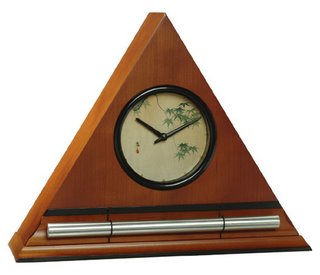 wake up alarm clocks with chimes Now & Zen’s Chime Meditation Timer Store
1638 Pearl Street
Boulder, CO 80302
(800) 779-6383
Posted in intention, mindfulness practice, Now & Zen Alarm Clocks, wake up alarm clock, Well-being
 listening to music can reduce stress A number of studies show that listening to music, especially classical or baroque, may help you unwind and improve your mood.
Though less melodic, therapeutic CDs of “binaural beats” also show promise as a means of calming the mind and body, according to several studies. These recordings work by projecting two tones of similar frequencies into each ear. This creates a “beat” at a certain frequency in the mind, say proponents, and your brain falls in sync with it; different frequencies call forth different moods.
adapted from Body + Soul Magazine, 2010
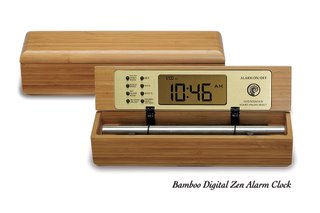 Bamboo Natural Chime Sound Alarm Clock  Now & Zen - The Acoustic Chime Alarm Clock Company - Boulder, CO Now & Zen’s Acoustic Chime Alarm Clock Store
1638 Pearl Street
Boulder, CO 80302
(800) 779-6383
Posted in Well-being
Stillness at Start and End of Day
 The best stress remedy is to do nothing, use a chime timer for a gentle reminder If checking your email has become as vital to your wake-up and bedtime routines as brushing your teeth, it’s time to unplug.
“Starting and ending the day in stillness is essential to stress reduction, so it’s absolutely critical not to jump into email during either of those times,” say”
In the morning and at night, turn off your computer (and TV) and pick up a book — or simply delight in the rare pleasure of doing nothing suggests Joan Borysenko, Ph.D., author of “Your Soul’s Compass.
A little nature therapy can also ease the stress of too much computer time. A stroll through a park or on a trail counteracts overstimulation and can also boost your mood and energy.
Our Digital Chime Zen Clock & Timer’s long-resonating Tibetan bell-like chime makes waking up and meditating a beautiful experience – its progressive chimes begin your day with grace.
adapted from Body + Soul Magazine, 2010
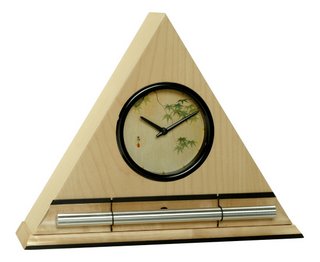 Zen Alarm Clock in Maple Finish, Japanese Leaves Dial Face and Stillness
Now & Zen’s Chime Timer Store
1638 Pearl Street
Boulder, CO 80302
(800) 779-6383
Posted in Chime Alarm Clocks, intention, mindfulness practice
 yogi tea Yogi tea is a hall-of-famer because it’s a timeless classic. The ayurvedic yogi tea (also known as chai) contains aromatic spices to warm and stimulate digestive fire while nourishing body and soul.
1 quart spring or filtered water
1 teaspoon whole black peppercorns
2 teaspoons cardamom seeds (or 3/4 teaspoon ground cardamom)
3-inch cinnamon stick, broken
1/4 teaspoon ground cloves
1-inch piece fresh ginger (or 1 teaspoon ground ginger)
1 teaspoon black tea leaves (may substitute decaffeinated black tea)
1/4 cup nonfat milk, or to taste (may substitute soymilk)
2 tablespoons honey, or to taste (optional)
1. In a medium saucepan, bring the water to a boil over high heat. Set your Zen Timer with Chime for 30 minutes. Add the spices, reduce heat, and simmer for 30 minutes.
2. Set your Zen Timer with Chime for 10 minutes. Add the tea leaves and let steep for 10 minutes. Strain the tea and add milk and honey, if using.
240 calories, 3g fat, 70g carbohydrates, 3.5g protein
adapted from Natural Home Magazine, Nov./Dec. 2005 by Elaine Gavalas
 Bamboo Zen Clocks and Chime Timers, a Natural Sound Timer for Tea Now & Zen’s Alarm Clock and Meditation Timer Shop
1638 Pearl Street
Boulder, CO 80302
(800) 779-6383
Posted in Chime Alarm Clocks, mindfulness practice, Well-being, Zen Timers
 breathing exercises help relieve stress How simple breath work can lead you to a deep state of relaxation.
Beginning students often ask for instructions on the “right” way to breathe. Alas, there’s no single answer to that question, since the optimal breathing pattern at any given moment depends on the type of practice. Restorative yoga focuses solely on relaxation, though, and emphasizes breathing that creates calm and serene states of being. When you settle into restorative poses, try the following techniques for cultivating breathing patterns that are hallmarks of relaxation and well-being.
MOVE THE BELLY WITH THE BREATH. When we are at ease, the diaphragm is the primary engine of the breath. As we inhale, this domelike muscle descends toward the abdomen, displacing the abdominal muscles and gently swelling the belly. As we exhale, the diaphragm releases back toward the heart, enabling the belly to release toward the spine.
KEEP THE UPPER BODY QUIET. During high-stress times, it’s common to heave the upper chest and grip the muscles in the shoulders and throat. When we’re at rest, the muscles of the upper chest remain soft and relaxed as we breathe, and the real work occurs in the lower rib cage. To promote this type of breathing pattern, consciously relax the jaw, throat, neck, and shoulders, and envision the breath sweeping into the deepest parts of the lungs as you breathe in and out.
BREATHE EASY. Although some breaths may be deeper or faster than others, when we’re relaxed, the alternating rhythm of the inhalations and exhalations feels like a lullaby—smooth, soft, and uninterrupted by jerks and jags. Consciously relaxing into this wavelike, oceanic quality of the breath deepens our sense of peace and ease.
LENGTHEN THE EXHALATIONS. When we feel stressed, our exhalations tend to grow short and choppy. When we’re relaxed, though, the exhalations extend so completely that they are often longer than the inhalations. Some teachers even instruct that if we’re deeply relaxed, each exhalation will be twice as long as the inhalation. To facilitate this, try gently extending each exhalation by one or two seconds. Set your Bamboo Meditation Timer with Chime for 20 minutes and continue this exercise.
PAUSE AFTER EACH EXHALATION. In our most relaxed state, the end of each exhalation is punctuated by a short pause. Lingering in this sweet spot can be deeply satisfying and can evoke feelings of profound quiet and stillness.
LET THE WHOLE BODY BREATHE. When we are at ease, the whole body participates in the breathing process. Imagine a sleeping baby: When he breathes in and out, the belly swells and releases, the hips rock to and fro, the shoulders bob, and the spine gently undulates. This offers a mini-massage for the muscles and organs of the whole body, and turns each breath into a soothing melody that further calms and quiets every cell within.
adapted from Yoga Journal Magazine, by Claudia Cummins
Our Chime Meditation Clock & Timer’s long-resonating Tibetan bell-like chime makes waking up and meditation a beautiful experience – its progressive chimes begin your day with grace.
The Chime Meditation Clock & Timer serves as a countdown and interval timer for yoga, meditation, bodywork, etc.; and it can also be set to chime on the hour as a tool for “mindfulness.”
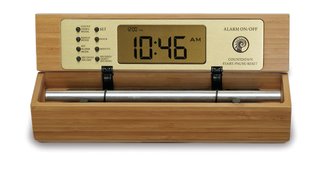 Bamboo Meditation Timers with Soothing Chimes for Breathe Work Now & Zen’s Chime Timer and Alarm Clock Shop
1638 Pearl Street
Boulder, CO
(800) 779-6383
Posted in Meditation Timers, Meditation Tools, mindfulness practice, Well-being, yoga, Yoga Timer, Yoga Timers by Now & Zen, Zen Timers
« Previous Page — « Previous Entries
Next Entries » — Next Page »
|
|
|
|